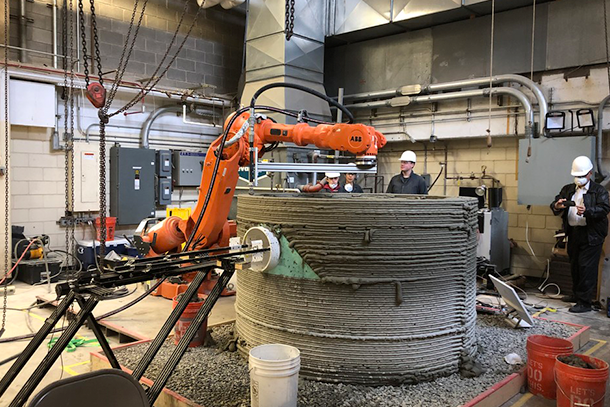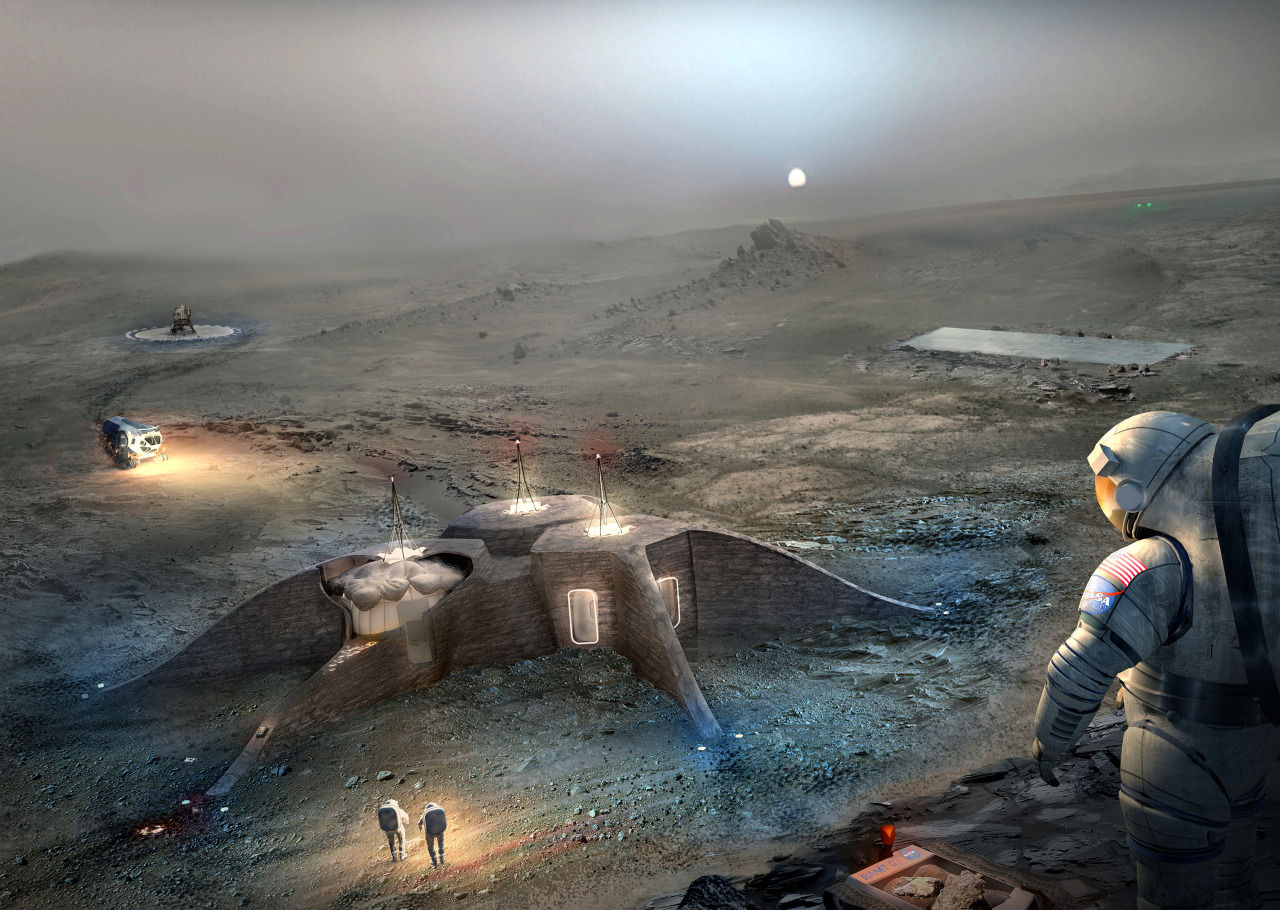A team from Pennsylvania State University (PSU) has received $75,000 to develop its 3D printing concrete system.
$50,000 of this sum comes from the College of Engineering’s Engineering for Innovation & Entrepreneurship (ENGINE) grant program and an additional $25,000 was received from the College of Arts and Architecture.
Following their participation in NASA’s 3D Printed Mars Habitat Challenge, the PSU team are designing high-performance, sustainable concrete with a new cement-based mixture to be used with their six-axis robotic additive manufacturing machine. This is enabling the construction of complex, waste-efficient structures.
“The technology for 3D printing of concrete is not being developed to replace conventional construction that can be carried out economically with existing methods,” said Ali Memari, principal investigator of PSU’s MarsCrete project and Professor and Bernard and Henrietta Hankin Chair in Residential Building Construction.
“Rather, this technology will be more useful for complex designs, where conventional methods of using formwork will be much more expensive or prohibitive.”

Penn State concrete 3D printing
The multidisciplinary PSU team comprises of faculty members from the School of Engineering Design, Technology, and Professional Programs (
“Given the breadth and depth of the knowledge required, it would be rather difficult for a single investigator to perform meaningful research at a reasonable pace in this area. Multidisciplinary collaboration among researchers with different, complementary expertise is, therefore, essential.”
As a result of the NASA’s challenge in 2017, a concrete 3D printer system with a dual mixer and pump feeding a nozzle manipulated by an industrial six-axis robotic arm was created. The grant is accelerating the development and testing of novel cement mixtures for the system.
Sven Bilén, Head of SEDTAPP explained, “The concrete formulations and the printer system are tightly coupled, as the design of one affects the design of the other.”
“We have to work from the micro-scale to the macro-scale. Our work is also tightly coupled to the architectural designs that can be realized via our materials and printing methods. All three — materials, printing system and architecture — must be considered together.”

Conventional and additive manufactured cement
According to the PSU team, traditional concrete consists of ordinary Portland cement (OPC), water, sand and aggregates. The production of a ton of OPC, requires between 1,700 and 1,800 megajoules of energy — enough to power about 500 100-watt lightbulbs for 10 hours. This process also emits approximately one ton of carbon dioxide into the Earth’s atmosphere.
Material mixture, characterization and design, as well as the additive manufacturing process and system are being improved and tested to combat the negative effects of each variable. The researchers believe this will allow for more control of the 3D printing system, ultimately enabling the production of complex structures.
Subscribe to the 3D Printing Industry newsletter, follow us on Twitter and like us on Facebook for more additive manufacturing news.
Join our 3D Printing Jobs to post a job or advance your career in 3D printing now.
Featured image shows members of the PSU 3D Printed Mars Habitat Challenge team test their 3D printing system. Photo via PSU.


